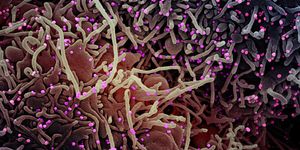Could Temperature Fight Obesity? Study in Mice Suggests Cold Exposure Could
Mammals, including humans, have at least two different types of fat tissue. White fat is the tissue where energy is primarily stored and the hormones that regulate metabolism and insulin resistance are released. Brown adipose tissue is not as well understood as white fat, but is thought to affect metabolism, insulin sensitivity, and susceptibility to weight gain.
Brown adipose tissue is known to regulate energy expenditure in rodents and newborn humans. In humans, brown adipose tissue is found in infants and young children but is more difficult to detect in adults. Research suggests that up to 20% of daily energy expenditure in adult humans could be accounted for by small amounts of brown adipose tissue.
A new study published by researchers from the Joslin Diabetes Center and Brigham and Women’s Hospital posits that cold temperature reduces inflammation induced by obesity in mice in a process that is dependent on brown adipose tissue. When stimulated by cold, the brown adipose tissue produces a molecule called Maresin 2.
Co-corresponding author Yu-Hua Tseng, PhD, noted that “we discovered that cold exposure reduced inflammation and improved metabolism in obesity, mediated at least in part by the activation of brown adipose tissue. These findings suggest a previously unrecognized function of brown adipose tissue in promoting the resolution of inflammation in obesity.”
The mice in the study were also found to have improved insulin sensitivity and glucose tolerance after being exposed to cold temperature (around 40 degrees Fahrenheit). This study has implications for research into obesity, which is thought to be linked with chronic inflammation and insulin resistance. Researchers hope that interrupting inflammation in obesity could provide a pathway for developing therapies for disease related to obesity.
“Extensive evidence indicates that obesity and metabolic syndrome are linked with chronic inflammation that leads to systemic insulin resistance, so interrupting inflammation in obesity could offer promising therapies for obesity-related disease,” said Yu-Hua Tseng.
Sources: The New England Journal of Medicine, Nature Metabolism








